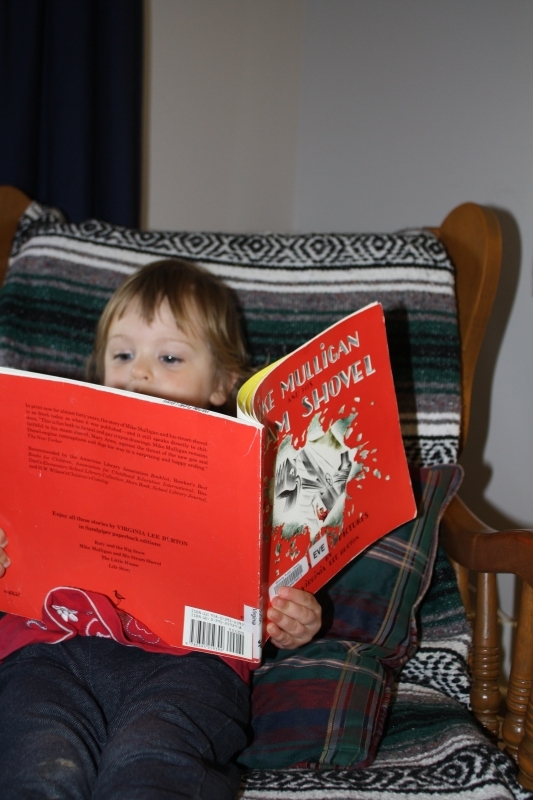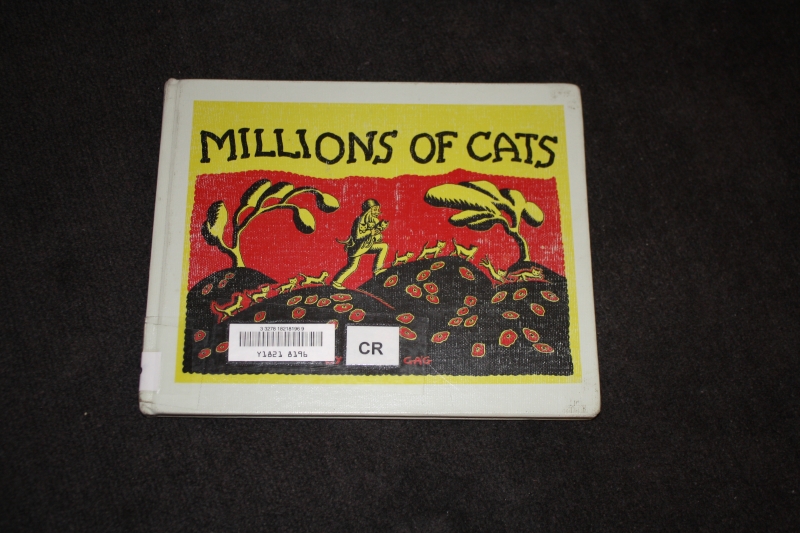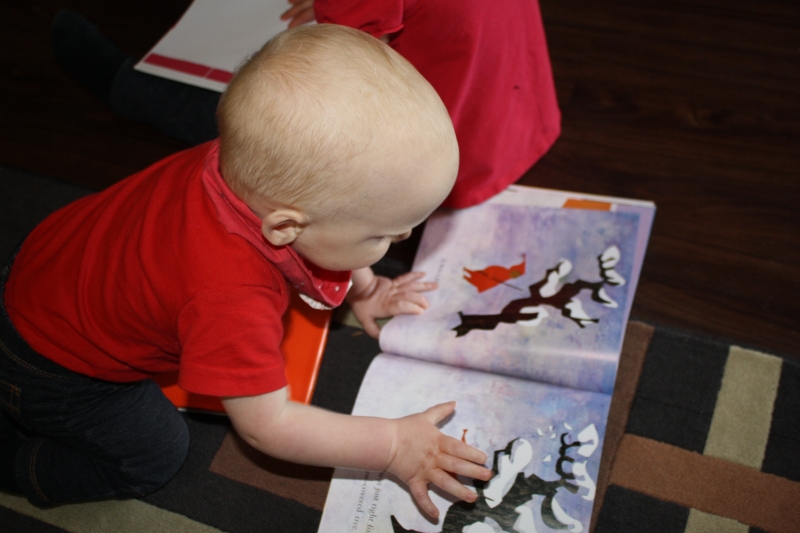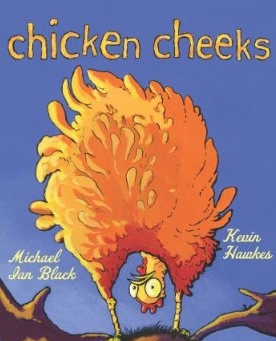Silvey’s collection of 100 Best Books for Children is organized into six categories: Board Books (Birth to age 2), Picture Books (Ages 2-8), Books for Beginning Readers (Ages 5-7), Books for Young Readers (Ages 7-9), Books for Middle Readers (Ages 8-11), and Books for Older Readers (Ages 11-12). The widest range by far is the picture book section, which covers a whopping 6 years (7 inclusive). In the introduction to each book, Silvey gives an “at a glance” which includes the title, author, illustrator, date of publication, publisher, age range, and length of the book. This is wonderful. But as I went through the picture book section, I noticed that the age ranges were always either “ages 2-5” or “ages 5-8”. Which frustrated me. I understand jumbling all the age ranges for picture books together if some books are best categorized as “ages 2-5” while others are “ages 3-7” and other “ages 5-8” – but if there are really two distinct categories of picture books, one for younger and one for older children, why not give those separate sections in the book?
I checked all of the picture books out of the library and read them, but I’ve chosen to separate them here into age ranges – because I wish that’s what Silvey had done for me. Below are the first five picture books geared toward preschoolers (ages 2-5) – the ones that fit my Tirzah Mae’s demographic.
Madeline written and illustrated by Ludwig Bemelmans
Me: “What do you think about Madeline? Is it a good book?”
Tirzah Mae: “Yeah.”
Me: “What do you think about Madeline? Is it a bad book?”
Tirzah Mae: “Yeah.”
Me (thinking): “That was helpful.”
Me (speaking now): “Is Madeline a good book or a bad book?”
Tirzah Mae: “A good book.”
And she brought it to me for re-reads.
My thoughts? If it weren’t already considered a classic, I’d have probably complained about the rather forced rhyme scheme.

The Snowman illustrated by Raymond Briggs
Remember how I don’t like wordless books? I really need to revise that statement now that I’ve found Baby Animal Spots and Stripes, Suzie Lee’s Wave, and The White Book by Elisabetta Pica and Lorenzo Clerici. The Snowman also joins the ranks of spectacular wordless books. Illustrated with multiple cells per page, like a cartoon strip, The Snowman tells the story of a snowman who takes the little boy who created him on a spectacular adventure. There’s enough detail here that you don’t have to stretch to tell a slightly different tale each time – and there’s plenty for a child to look at to help them tell the story themselves.

Mike Mulligan and His Steam Shovel written and illustrated by Virginia Lee Burton
I remember this book fondly from my childhood, remembering Mike and Mary Anne digging faster and faster but failing to give themselves an escape route. And I remember the solution: turning Mary Anne into the furnace for the new town hall. I don’t remember that the context was the obsolescence of the steam shovel (which was replaced by “gasoline diggers and electric diggers and diesel diggers”) or that the newly-hired City Hall janitor Mike Mulligan apparently only sits in the basement in a rocking chair telling stories. I suppose that’s for the best. I take heart from my own experience that children can enjoy stories, even ones that might have some political under- or over-tones, without internalizing all the issues they bring up. So I’ll keep reading this one to Tirzah Mae (and probably Louis too when he’s a bit older), although I might not make a priority of acquiring it for our home library.

Millions of Cats written and illustrated by Wanda Gág
A very old man and a very old woman were lonely, so the very old man sets off at his wife’s behest to find them a cat to keep them company. He finds “hundreds of cats, thousands of cats, millions and billions and trillions of cats”, but can’t decide which to bring home. So, of course, he brings them all home. This is a great story, with just the right amount of repetition, a little bit of violence (’cause children’s books need a little violence here and there), and an understated moral. The black and white illustrations are a refreshing change from the bright modern cartoons currently so favored in children’s picture books.

The Snowy Day written and illustrated by Ezra Jack Keats
It was sunny and bright with leaves on the trees and green grass covering the rain-slogged land when Tirzah Mae and I read Ezra Jack Keats’s The Snowy Day. I didn’t expect this story to resonate much with Tirzah Mae, since her only experience with snow was at Grandma and Grandpa’s when she was one. But resonate it did. Tirzah Mae was delighted to point out Peter on every page as he enjoyed the eponymous snowy day in the city. When we finished, she begged me to read it again and again. Finally, I left her to narrate the story herself, which she did with surprising detail, talking about Peter’s bath and how his mom took off his socks and “about the snowy day”. This was a definite hit – one I think I might check out next winter near when we travel north again (just in case we can catch a bit of snow ourselves!)

All in all, I’m glad we’re reading through these books together. While I’m not enamored with all of them, they are introducing me to books I have never read, some of which that are quite good. I’ll probably have another couple posts on these preschooler picture books (there are nine more) – and haven’t decided whether I’m going to write about the books for 5-8 year olds or not – maybe I should wait until I’m reading those with the kids?



